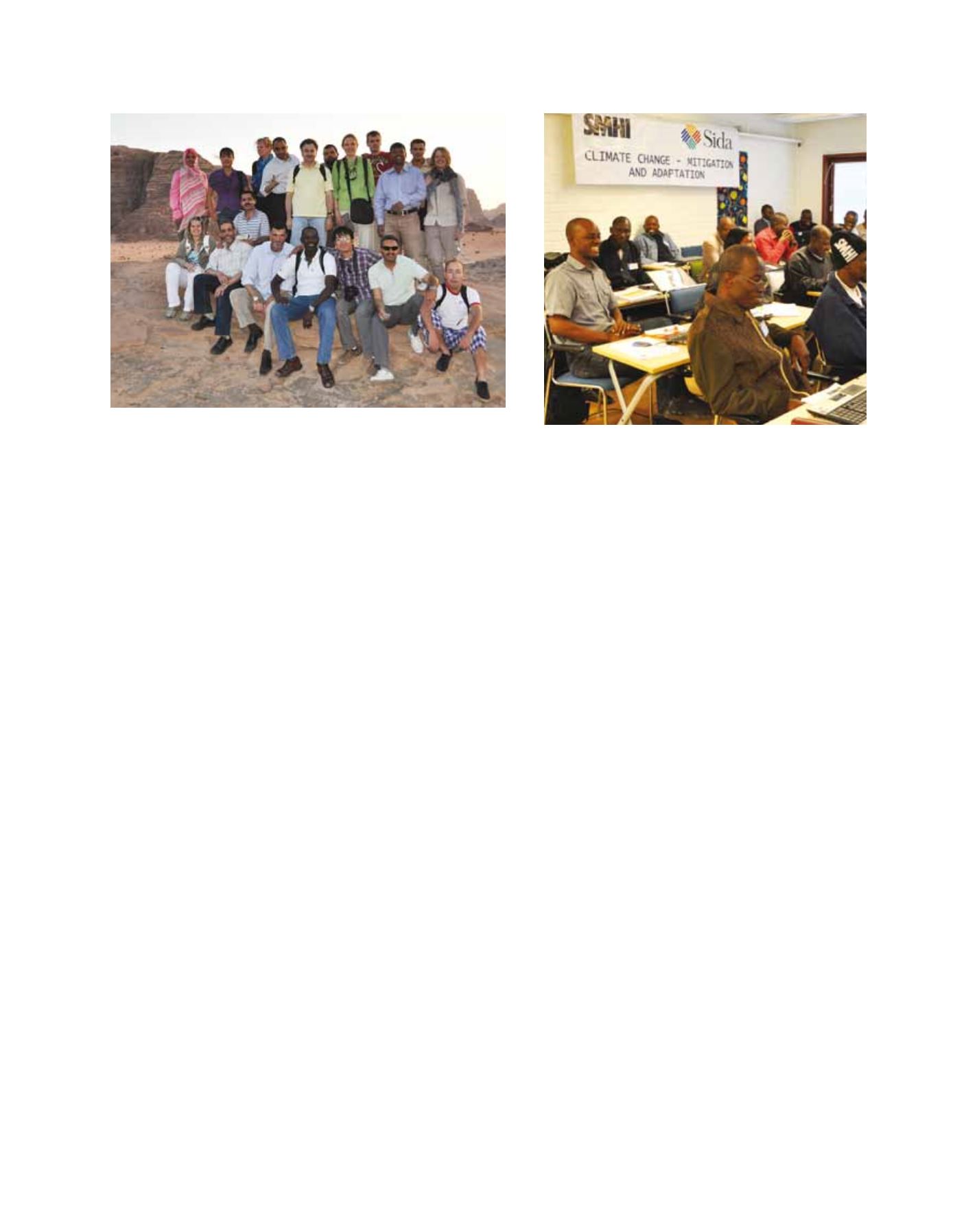

[
] 259
C
apacity
D
evelopment
communication. One example is from Mali in West
Africa. This project discusses the existing management
strategies for water and land resources and how they
have been weakened by ongoing climate change. The
author concludes that the situation leads to structural
poverty and difficulties in accessing necessary resources.
However, there is still hope based on some successful
examples in the Diorila region and the author recom-
mends further international cooperation on these issues.
Another example from the West African region discusses
the climate impact on surface water resource in the Niger
watershed in Burkina Faso. The project report highlights
the climate-related water stresses that affect the already
daunting hunger and poverty. The author recommends
large-scale studies to further understand the climate
impacts on surface water resources.
Two further examples come fromTanzania and Zambia.
The project work from Tanzania points out climate vari-
ability as a big challenge to farmers, particularly those
who solely depend on rainfall to grow their crops. For
various reasons there is widespread lack of use of weather
and climate information as well as predictions in farm
management. The author believes that the application of
climate forecasts can significantly improve the farmers’
decision-making and adaptation to the changing climate.
The example from Zambia discusses the need for commu-
nication networks for disseminating climate change
information and raising awareness in rural communi-
ties. The results show that rural communities are aware
that the climate is changing but they know little about
the causes. The project achieved the goal of disseminat-
ing climate change information in three communities and
raising awareness on climate change among them. This
in the end enabled the communities to identify climate
hazards affecting their area and coping strategies.
The examples given above are all from project works
accomplished by staff of NMHSs. They are encourag-
ing as they show that NMHS personnel are prepared to
The training programme is mainly based on lectures, exercises
and field visits. To cover the broad scope of objectives, external
international experts as well as staff from SMHI are used as lecturers.
The content is built up around the following blocks:
• The greenhouse effect and impacts of climate change
• Impacts on water resources and coastal zones
• Impacts on agriculture and forestry and the need for
preventive action
• Strategic planning to counteract the causes of climate change
• Community planning, vulnerable sectors, interdisciplinary
planning and cost-benefit analysis
• Strategic planning pertaining to potential positive consequences
of climate change
• Information, education and public participation.
One essential aspect of the programme is that it provides a forum
for discussions and exchange of experience between participants,
lecturers and specialists. Much of the time is dedicated to group
exercises, which helps bringing the individuals of different national-
ities and backgrounds closer together. The training programme ends
with a one-week follow-up seminar in one of the regions relevant
to the specific course. At these regional seminars the results of the
individual projects are presented and discussed, and there is also
input from regional organizations.
Long-term engagement
For six to eight months after their visit to Sweden, participants work
with their individual projects according to the plan elaborated during
their stay. A written report is produced and a presentation is prepared
for the regional seminar. In this work it is essential that the participants
are supported by superiors and colleagues in their home organization.
Ideally the project work should be in line with their ongoing work and
contribute to the development of knowledge and efforts to improve
methods and procedures. This demands long-term engagement by the
participants and commitments from their home organizations.
The programme started in 2007 and since then we have witnessed
a great variety of individual projects. The majority of the studies have
been oriented towards water resources, agriculture and education/
An excursion in Wadi Rum – close to Aqaba – during
the regional seminar in Jordan, May 2011
Image: Åsa Johnsen, SMHI
Participants during a lecture at SMHI in Sweden, March 2012
Image: Åsa Johnsen, SMHI
















